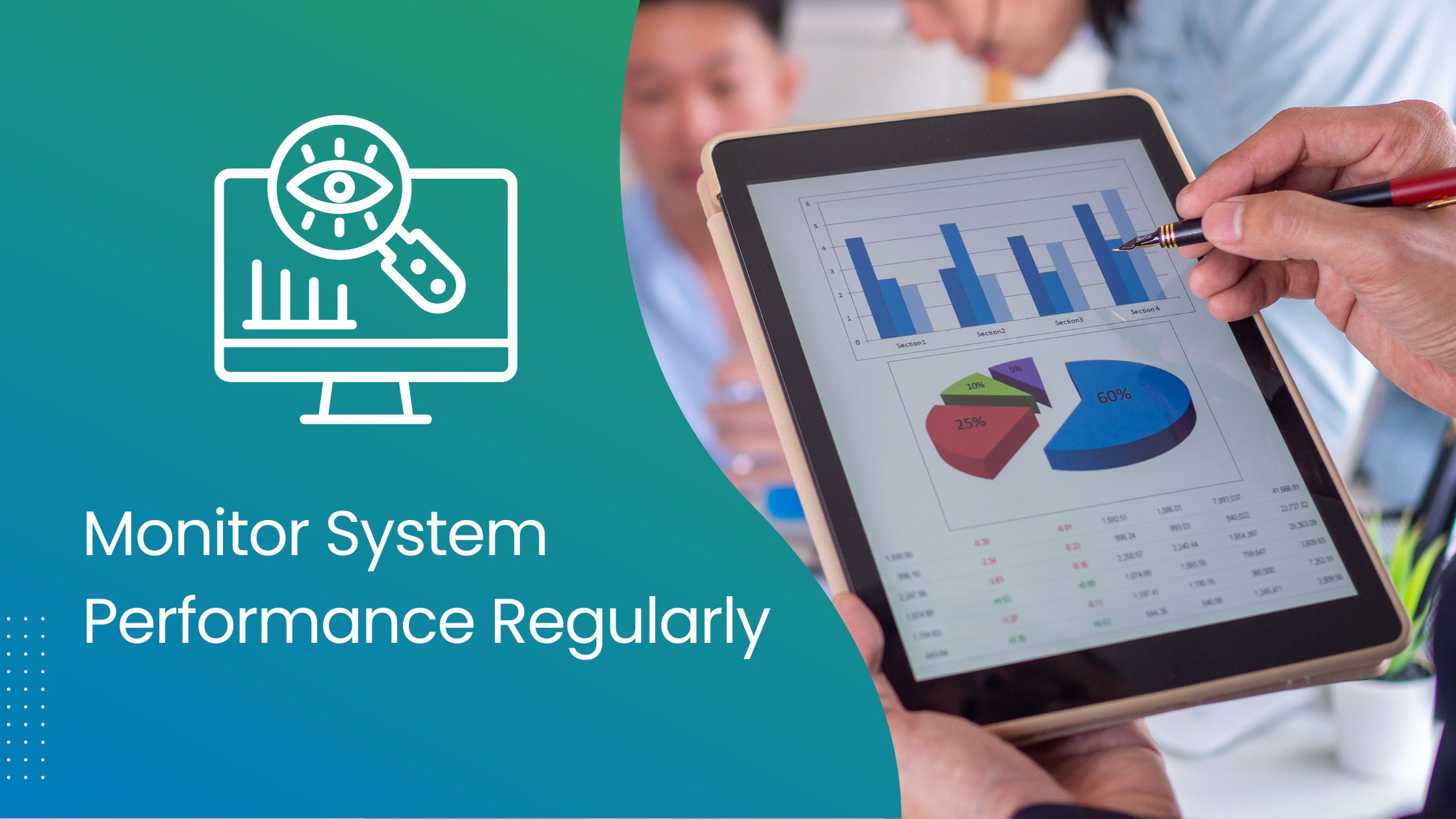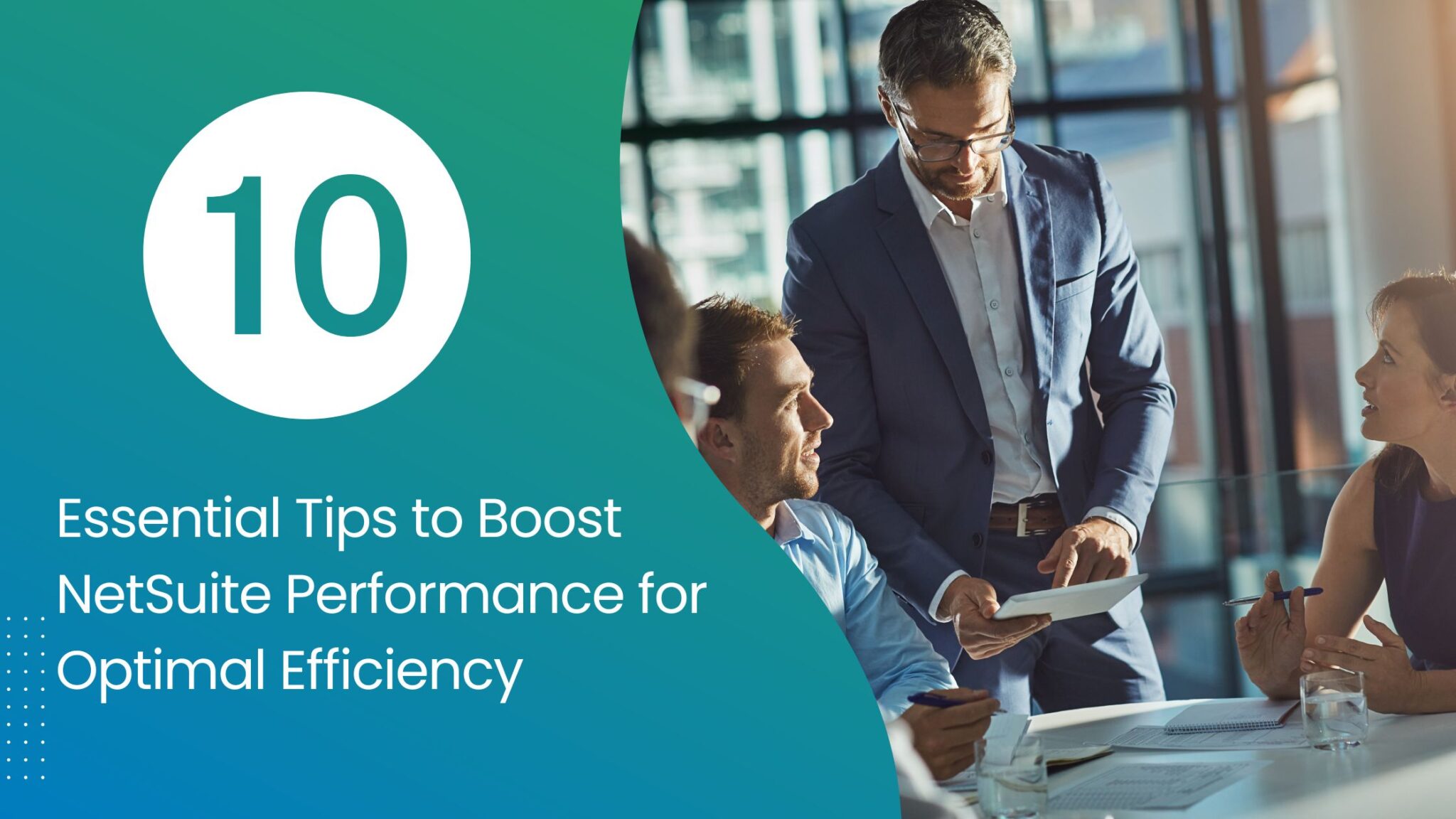NetSuite is a versatile, cloud-based ERP system that has become essential for businesses looking to streamline processes, improve efficiency, and foster growth. However, like any robust software, NetSuite performance can decline if not managed effectively. In this guide, we’ll discuss ten key tips for optimizing NetSuite performance, helping you ensure smooth operations and peak efficiency.
1. Clean and Organize Your Data Regularly
One of the primary causes of slow NetSuite performance is cluttered or outdated data. Regularly clean your data by removing unnecessary or inactive records, such as old customers, vendors, items, and transactions. Use the SuiteAnalytics Workbook to identify unused or duplicated records and remove them to keep your data streamlined.
2. Streamline Saved Searches
Saved searches are a powerful tool for retrieving specific data, but inefficient or excessive saved searches can slow down performance. Review your saved searches regularly and delete any that are no longer necessary or consolidate overlapping searches. Optimizing saved searches will help reduce the load on your system.
Optimize your NetSuite performance by streamlining saved searches!
3. Optimize Dashboard Layout
A cluttered dashboard with too many widgets and reports can impact NetSuite’s performance. Limit the number of widgets and only display metrics essential to your role. This not only improves system speed but also makes the dashboard more user-friendly and efficient.
NetSuite is a versatile, cloud-based ERP system that has become essential for businesses looking to streamline processes, improve efficiency, and foster growth. However, like any robust software, NetSuite performance can decline if not managed effectively. In this guide, we’ll discuss ten key tips for optimizing NetSuite performance, helping you ensure smooth operations and peak efficiency.
4. Use Record Segmentation for Better Performance
Record segmentation in NetSuite is a technique that divides large datasets into smaller, more manageable segments. This process helps improve performance by speeding up data retrieval and reducing performance lags, especially useful for businesses with high data volumes. When records are segmented, NetSuite can access relevant information faster because the system doesn’t need to process an entire database each time a search or operation is performed.
For example, you might segment data by customer regions, transaction types, or time periods. By organizing data into categories that align with your specific operational needs, you enhance the system’s ability to quickly locate and retrieve data. Additionally, record segmentation reduces database load, which can further help maintain overall system responsiveness and efficiency.

5. Keep NetSuite Updated
Keeping NetSuite up-to-date is crucial for maintaining optimal performance. NetSuite regularly releases updates thatinclude performance fixes, enhancements, security improvements, and bug resolutions. These updates are designed to improve the overall efficiency, reliability, and security of the system, addressing issues that may slow down operations or compromise functionality.
By staying current with the latest patches and releases, you ensure that your NetSuite environment benefits from new features and optimizations, as well as essential fixes that resolve known issues. Regular updates also support compatibility with third-party integrations and help prevent unexpected slowdowns or errors that can result from outdated software. For companies aiming to maximize NetSuite’s capabilities, an updated system is key to ensuring smooth, fast, and secure performance across all business processes.
Keep NetSuite performing at its best by staying up-to-date!

6. Evaluate External Integrations
Integrating third-party applications with NetSuite can significantly enhance functionality, enabling the system to better align with your business’s unique needs. However, these integrations can also introduce performance challenges, as they may place additional load on NetSuite, causing slower processing or lag times.
To mitigate potential issues, it’s important to carefully evaluate each integration. Before fully implementing any new tool or connection, conduct thorough testing to assess its impact on system performance. This includes testing data synchronization speeds, monitoring response times, and evaluating compatibility with NetSuite’s latest updates. Additionally, consider setting upintegration schedules that align with non-peak times to prevent performance bottlenecks during high-traffic periods.
By strategically managing integrations, you can ensure that they contribute positively to your NetSuite environment without compromising overall system speed or reliability. Regularly reviewing and optimizing these integrations as your business grows will also help maintain NetSuite’s performance over time.

7. Monitor System Performance Regularly
Regularly monitoring system performance is essential for ensuring that NetSuite runs smoothly and efficiently. NetSuite’s Performance Analytics tool provides real-time insights into how your system is operating, helping you identify bottlenecks, lagging components, or any processes that may be causing slowdowns.
By tracking metrics such as response times, system load, and the efficiency of individual processes, you can pinpoint specific areas that may need attention. For example, you might discover that certain saved searches, reports, or integrations are consuming excessive resources, which can be optimized or adjusted. Monitoring tools also enable you to see how performance varies throughout the day, helping you plan resource-heavy tasks during off-peak times to minimize the impact on other operations.
Addressing performance issues proactively through regular monitoring allows you to catch problems before they escalate, ensuring consistent system speed and a better user experience. Additionally, continuous monitoring supports more informed decision-making as your business scales, as you’ll have a clear understanding of your system’s capabilities and limitations.

8. Clean Up Historical Data Periodically
Over time, accumulated historical data, like outdated records or closed transactions, can slow down your NetSuite system. Periodically archive or delete old data that’s no longer needed to keep your system running smoothly. This practice will reduce database clutter and enhance NetSuite performance.

BOOST your NetSuite performance!
9. Provide User Training for Efficiency
Individual user actions, like leaving unused tabs open or failing to clear browser cache, can contribute to system slowdowns. Train users on best practices, such as closing unused tabs, optimizing search habits, and clearing cache. Educating users on efficient NetSuite practices contributes to a better-performing system.

10. Leverage Professional Services for Further Optimization
If you’re still experiencing slow performance after implementing these tips, consider seeking professional services like BOOST from GVO. These services can provide an in-depth analysis of your system and recommend advanced strategies for further performance enhancements.
Conclusion
Optimizing your NetSuite performance is a proactive process that involves regular data management, monitoring, and maintenance. By following these ten tips, you can improve system speed, enhance user experience, and maximize the value of your NetSuite ERP. A well-optimized NetSuite solution empowers you to manage your business operations effectively and achieve long-term success.
Frequently Asked Questions (FAQs)
NetSuite is a cloud-based ERP system designed to help businesses streamline processes and improve efficiency. Performance optimization is essential to ensure smooth, fast operations and avoid slowdowns that can disrupt workflows.
Regularly cleaning and organizing data by removing outdated or unused records reduces clutter, making it easier for NetSuite to process and retrieve data quickly. This results in faster system performance.
Inefficient or excessive saved searches can slow down NetSuite’s performance. Regularly reviewing and optimizing saved searches helps reduce load times and improves system speed.
A cluttered dashboard with too many widgets can impact performance. Limiting widgets to only essential metrics makes the dashboard more user-friendly and speeds up system response.
Record segmentation involves dividing large data sets into smaller segments, which speeds up data retrieval and minimizes performance lag, especially with extensive data.
Regular updates from NetSuite include performance enhancements, bug fixes, and new features. Staying updated helps ensure the system operates at peak efficiency.
Third-party integrations can add functionality but may also slow down performance. Carefully assessing and testing integrations minimizes any potential impact on NetSuite’s performance.
Monitoring performance using NetSuite’s Performance Analytics tool helps identify bottlenecks, allowing you to address issues proactively and maintain system efficiency.
Over time, old data can clutter the database, slowing down NetSuite’s performance. Periodic archiving or deletion of unnecessary data improves system speed.
Professional services, such as goVirtualOffice’s BOOST, offer advanced analysis and strategies to further enhance NetSuite’s performance if standard optimization techniques are insufficient.

